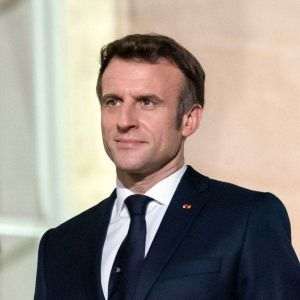Gold has gained about 26% so far this year, on track for its best annual performance since 2010, largely driven by the U.S. central bank's interest rate cut and heightened geopolitical tensions that have driven investors to the traditional safe-haven asset.
Analysts believe the yellow metal, which was trading around $2,610 an ounce early yesterday, is poised to continue its rise next year as some central banks continue to turn to gold to diversify their reserves, interest-bearing assets lose their appeal, and Donald Trump's election victory adds uncertainty to global trade.
• Heraeus Precious Metals: "If Beijing's stimulus measures boost the economy, China and India could provide a solid foundation for gold demand in 2025"
Gold could continue its rise in 2025 as interest rate cuts by major central banks and the prospect of a weaker dollar boost demand for the safe-haven asset, according to Heraeus Precious Metals, The Economic Times wrote in an article published last week.
Heraeus expects the price of gold to range between $2,450 and $2,950 per ounce next year, with the yellow metal's price to be influenced by continued purchases by central banks, albeit in smaller quantities than in 2024, as well as geopolitical risks in Ukraine and the Middle East, the source added, citing Reuters.
Often considered a safe-haven asset during times of political and financial uncertainty, gold tends to appreciate when lower interest rates are anticipated, reducing the opportunity cost of holding the non-cash-generating precious metal. "If the Beijing government's stimulus measures deliver economic momentum, China and India could provide a solid foundation for gold demand in 2025," the firm said in a report.
In November, the People's Bank of China resumed gold purchases after a six-month hiatus, according to the institution's recently released data. In addition, according to Goldman Sachs, Beijing is actually buying far more gold than it is reporting, Binance wrote.
"With the return of Donald Trump as president of the United States, there will likely be more uncertainty regarding trade and tariffs, which should also support the price of gold," said Steffen Metzger and Stefan Staubach, who until recently led Heraeus' precious metals division.
• Fed cuts interest rates by 25 basis points this week, sees only two cuts next year
The Federal Reserve cut its key interest rate by 25 basis points on Wednesday to a range of 4.25-4.5%, but Chairman Jerome Powell said the bank would slow the pace of rate cuts, predicting it would likely operate two more countries in 2025, which brought a decline for gold.
Over the past two months, after reaching a historic high of around $2,790 an ounce, the rise in the price of gold has stopped, with the price entering a consolidation movement. "I see the consolidation as a continuation configuration of the longer-term upward trend in gold. I think that trend will reactivate in the first quarter of 2025," said Peter Grant, vice president and senior metals strategist at Zaner Metals, quoted by Reuters.
• Goldman: "Demand for gold-backed ETFs tends to increase gradually for six months after interest rate cuts"
Goldman Sachs had, before this week's Fed meeting, several scenarios for the evolution of gold, in one estimating that the price will reach $ 3,000 next year, as evidenced by an article published by Business Insider.
The key element for the evolution of the precious metal was related to the Federal Reserve's monetary policy, with Goldman having one of the most "dovish" (n.r. in the sense of a more relaxed monetary policy) forecasts on Wall Street, with four interest rate cuts, before the meeting.
Because gold does not offer interest, it is less attractive than interest-bearing assets when rates are high, but the relationship tends to change as the cost of money falls, Business Insider mentions in the article published in the second part of last week.
The Goldman team also pointed out that the main risk to its $3,000 per ounce gold forecast is that rates will remain high for a longer period of time, a scenario that seems more likely after the Fed's latest meeting.
"For example, if the Fed were to cut rates by just 25 basis points (which would likely also strengthen the dollar), we estimate that gold prices would rise to just $2,890/ounce by the end of 2025," strategists said, quoted by Business Insider.
In a previous report, Goldman pointed out that demand for gold-backed ETFs tends to gradually increase for six months after interest rates are cut, leading to price appreciation as rising demand puts pressure on limited supply.
• "Key buyers like China, with large dollar reserves and a long-term strategic interest in diversification, may increase their demand for gold," according to the Goldman Sachs team
The strengthening dollar, which will boost central bank gold purchases, is another factor on which Goldman strategists base their growth forecast for the precious metal, according to Business Insider.
Starting in 2022, after Russia invaded Ukraine and Western countries imposed sanctions on Moscow, central banks outside the United States began diversifying their reserves, including towards gold, which has been one of the main sources of demand for the yellow metal in recent years.
According to Goldman, this trend will continue, with strategists expecting foreign central banks to add 30 tons of gold per month through 2025, significantly more than the amounts purchased before Russia faced sanctions. In their view, while a stronger dollar may force banks in some emerging markets to hold their dollar reserves, Goldman expects larger central banks to increase their gold purchases to support their weaker currencies.
"Key buyers such as China, with large dollar reserves and a long-term strategic interest in diversification, may even increase their demand for gold during periods of currency weakness to bolster confidence in the currency," Goldman analysts wrote, noting that this has happened before during periods of yuan weakness.
• "When geopolitical shocks drive dollar strength, dollar and gold prices tend to rise together," Goldman strategists say
Gold generally falls when the dollar strengthens, because a stronger dollar usually reflects a stronger economy, but this time the dollar is rising amid international concerns rather than expectations of higher interest rates, the Goldman team says.
"When trade tariffs - a key element of our currency strategists' longer-term view of a stronger dollar - or, more generally, when geopolitical shocks drive dollar strength, dollar and gold prices tend to rise together," according to the Goldman team. In their view, increased geopolitical uncertainty and equity market risk can be a boon for both assets, which are considered top-tier safe-haven assets, Business Insider writes.
• Oldenburger: "Growth in global gold ETF assets could attract more retail investors in 2025"
Konstantin Oldenburger, an analyst at CMC Markets, highlights the evolution of gold ETFs, which are used by institutional and retail investors in different strategies, so that the money flows recorded by these instruments often reflect the short-term and long-term sentiment of the markets.
"These ETFs have seen consistent inflows since mid-2024, mainly from North America and Asia," Oldenburger pointed out in an article published last week. According to the analyst, holdings of global gold ETFs have increased, and their total assets have increased by 33% in annual dynamics, being fueled by the increase in the price of the yellow metal.
"This may attract more retail investors in 2025," believes the CMC Markets analyst.
• "Investors are shifting their dollar holdings into more neutral assets, such as gold," says CMC Markets analyst
In addition to retail investors, central banks are also buying gold, says Oldenburger, emphasizing that while in mature economies such as France, Germany and Italy about 70% of bank reserves are in gold, in emerging markets the proportions are significantly lower, for example in China only 5% of the reserves of the People's Bank of China.
Citing Goldman Sachs Research data, the analyst also pointed out that, recently, central banks of major emerging markets such as Russia, China and other non-Western states have intensified their gold purchases - perhaps to protect themselves against possible financial sanctions.
There are also concerns about the United States' debt, which has reached 35 trillion dollars, equivalent to 124% of GDP, says Oldenburger. "As many central banks have significant holdings of US government securities, and concerns about fiscal risks in the United States grow on Wall Street, investors are shifting their dollar holdings into more neutral assets such as gold," the CMC Markets analyst added.


















































